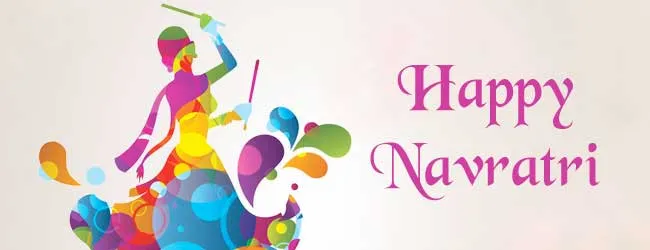The Nine Nights of Goddess Shakti

India has a rich heritage and an enthralling historic background with a plenty of festivals and cultural events lined up all through the year. And, behind each Indian festival there lies a great historic background and meaning, though, religious rituals, playfulness and merriment are the constituents that primarily create a festive mood. Among many such colourful, vibrant festivals is Navratri – the festival dedicated to the Goddess Shakti and her divine powers – the festival of Nine Nights.
In the Indian languages of Hindi and Gujarati, the word “Nav” stands for the number 9, and the word “Ratri” stands for the Nights – thus, literally getting translated to the ‘Nine Nights. Navratri is one of the significant festivals celebrated by the Hindus the world over. As per the Hindu Calendar, Navratri is celebrated twice in a year. However, the Sharadiya Navratri, celebrated around the Sharad ritu or before Dussehra festival is the one that is celebrated with great fervour and splendour.
In the Indian state of Gujarat and Maharashtra, this much loved festival is taken pretty literally, as people take to dancing, amusement and gaiety for all the Nine Nights and even on Sharad Poornima that falls about two weeks after Dusshera. Irrespective of their religion, people in these colourful states dress up in their festive-finery and join steps to dance to the beats of Garba (Gujarat’s folk dance) and Dandiya (another popular Indian folk dance that involves the use of wooden sticks as dance props).
In many other Indian states too, this festival takes on different forms, and is celebrated with great reverence and enthusiasm, like in West Bengal, where Durga Pooja is celebrated during the latter 5 days of this festival. Dussehra is called as the Vijaya Dashmi in West Bengal, Orissa and North Eastern states of Assam and Sikkim.
Durga, who is considered the Hindu deity of Power (or Shakti). Similar to many other Indian festivals, Navratri also has a deep meaning linked to it. Different forms of Goddess Durga are revered through the 9 nights, which explains why Navratri is one of the most significant festivals of the Hindus.
This time of the year is also considered very auspicious, and people tend to begin new events and buy new clothes, vehicles etc. during this time. Hindu devotees all over the world pray, fast and offer satvik delicacies to Brahmins, during this time.
Bring home a Siddh, worshipped and attuned Meru Prusth Shree Yantra to your home during this pious time of Navratri. This beautiful, 3 dimensional Yantra is representation of the Goddess Lakshmi herself.
There many legends and myriad stories that surround these 9 Nights, and one of the popular explanations on the significance of each of these nights is given below –



